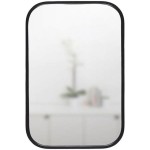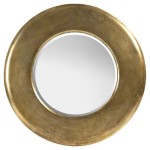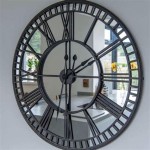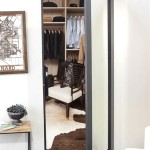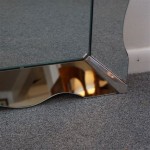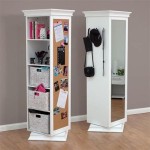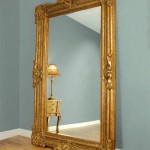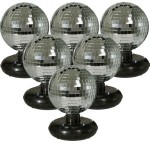Antique Dressing Tables with Tri-Fold Mirrors
Antique dressing tables with tri-fold mirrors represent a unique blend of functionality and artistry. These pieces, often crafted with intricate detail and high-quality materials, offer a glimpse into historical craftsmanship and design aesthetics. Understanding their history, construction, styles, and how to identify genuine antique pieces can enhance one's appreciation for these beautiful and practical objects.
The concept of a dedicated space for personal grooming dates back centuries. Early forms of dressing tables were simple, functional pieces of furniture. As societal values shifted and personal appearance gained importance, particularly among the affluent, the dressing table evolved into a more elaborate and decorative item. The incorporation of the tri-fold mirror, believed to have originated in the late 17th or early 18th century, added a new dimension of functionality and elegance.
The tri-fold mirror offers a practical advantage: the ability to view oneself from multiple angles. The two side mirrors can be angled to provide a comprehensive view, aiding in tasks such as hair styling and makeup application. This feature also adds a touch of grandeur and sophistication to the dressing table, elevating it from a simple utilitarian object to a statement piece.
Antique dressing tables with tri-fold mirrors were typically constructed from high-quality woods such as mahogany, walnut, cherry, or oak. The wood was often meticulously carved with intricate designs, reflecting popular styles of the period. Some tables also featured inlaid patterns using contrasting wood or other materials like mother-of-pearl. Marquetry, a decorative technique involving the application of veneers to form intricate patterns, was also common on high-end pieces.
The mirrors themselves were typically made from high-quality glass, often backed with silver or mercury. The frames of the mirrors often echoed the decorative motifs found on the table itself, creating a cohesive and aesthetically pleasing design. The overall construction of these pieces reflects a dedication to craftsmanship and attention to detail, hallmarks of antique furniture.
Several distinct styles are evident in antique dressing tables with tri-fold mirrors, reflecting the prevailing design trends of their respective eras. Victorian-era tables (1837-1901) are often characterized by ornate carvings, dark woods, and elaborate embellishments. Art Deco pieces (1920s-1930s) tend to feature geometric shapes, streamlined designs, and the use of materials like chrome and Bakelite. French Provincial styles evoke a rustic elegance, often featuring lighter woods, curved lines, and delicate floral motifs. Understanding these stylistic nuances is crucial for proper identification and valuation.
Identifying a genuine antique dressing table requires careful examination and attention to specific details. The construction techniques used provide valuable clues. Hand-cut dovetail joints, mortise and tenon construction, and the absence of modern manufacturing techniques are indicative of older pieces. The type of wood used can also be a significant indicator, as certain woods were more prevalent in specific periods.
The hardware, including drawer pulls, hinges, and knobs, is another important element to consider. Antique hardware often features unique designs and handcrafted details. The presence of patinas, wear marks, and imperfections can also be indicators of age and authenticity. However, it's essential to differentiate between genuine signs of age and artificially created distressing.
The condition of the piece is a crucial factor in determining its value. While minor imperfections can add to the charm and character of an antique, significant damage or repairs can detract from its value. Examining the piece for signs of restoration, such as replaced veneers or repaired carvings, is crucial for accurate assessment.
The mirror itself provides valuable information. Older mirrors may exhibit some degree of foxing or silvering loss, which is a natural occurrence over time. The type of glass used can also be an indicator of age. Examining the back of the mirror can sometimes reveal markings or labels from the original manufacturer.
Provenance, or the documented history of ownership, can significantly enhance the value and authenticity of an antique dressing table. Provenance might include original sales receipts, auction records, or family histories. While provenance is not always available, its presence can be a valuable asset.
Caring for an antique dressing table with a tri-fold mirror requires specific considerations to preserve its integrity and value. Avoid placing the table in direct sunlight, which can fade the wood and damage the mirrors. Extreme temperature fluctuations and high humidity should also be avoided. Regular dusting with a soft cloth is recommended, and occasional waxing can help protect the wood and maintain its luster. Harsh chemicals and abrasive cleaners should be avoided as they can damage the finish.
Antique dressing tables with tri-fold mirrors offer a unique blend of functionality and historical significance. Understanding their construction, styles, and methods of identification allows for a greater appreciation of their artistry and craftsmanship. Careful consideration of these factors is essential for collectors and enthusiasts seeking to acquire and preserve these beautiful pieces of furniture.

Trifold Vanity Transformation A Makeover To See Prodigal Pieces

Vanities Trifold Mirror Vanity

Vintage Burr Walnut Dressing Table With Trifold Mirrors For At Pamono

Trifold Vanity Transformation A Makeover To See Prodigal Pieces

Antique Baroque Dressing Table Walnut Trifold Mirror Vanity Desk Queen Anne 1940

Vintage Burr Walnut Dressing Table Trifold Mirrors Must See Pictures Lovely Find At 1stdibs Antique With Tri Fold Mirror

Antique Art Deco Dressing Table With Trifold Mirrors Queen Ann Legs For At Pamono

Antique Art Deco Burr Walnut Dressing Table With Tri Fold Mirrors Part Of Suite At 1stdibs Mirror Vanity Value 1920 S

Vanity Dresser With Long Trifold Mirror Antique Victorian Bench Stunning

Circa 1930 S Bleached Walnut Dressing Table With Tri Fold Mirrors Part Of Suite

